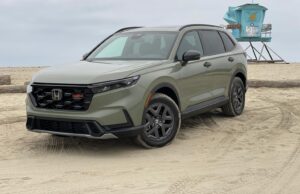Volvo hopes to decrease this percentage cyclist/ car collisions with its new cyclist detection system at the Geneva Motor Show. The system detects and automatically brakes for cyclists swerving out in front of the car.

In cities like San Francisco and New York there where there are a high number of cyclists sharing the road with motor-powered vehicles, cyclists are always in danger of a possible collision. According to accident data, about 50 percent of all cyclists killed in European traffic have collided with a car. Volvo hopes to decrease this percentage with its new cyclist detection system at the Geneva Motor Show. The system detects and automatically brakes for cyclists swerving out in front of the car.

The advanced sensor system scans the area ahead. If a cyclist heading in the same direction as the car suddenly swerves out in front of the car as it approaches from behind and a collision is imminent, there is an instant warning and full braking power is applied. The new functionality is an enhancement of the present detection and auto brake technology, and the package will be called Pedestrian and Cyclist Detection with full auto brake. All Volvo models equipped with pedestrian detection will also incorporate cyclist detection.
Pedestrian and Cyclist Detection with full auto brake consists of a radar unit integrated into the car’s grille, a camera fitted in front of the interior rear-view mirror and a central control unit. The radar’s task is to detect objects in front of the car and to determine the distance to them. The camera determines the type of the objects. Thanks to the dual-mode radar’s wide field of vision, pedestrians and cyclists can be detected early on. The high-resolution camera makes it possible to spot the moving pattern of pedestrians and cyclists. The central control unit continuously monitors and evaluates the traffic situation.
The auto brake system requires both the radar and the camera to confirm the object. With the advanced sensor technology, it is then possible to apply full braking power immediately when necessary. The technology also covers vehicles driving in the same lane.
“As the leader in automotive safety, we have been first in the industry with all detection and auto brake technologies, from the first-generation brake support in 2006 to pedestrian detection with full auto brake in 2010,” said Doug Speck.









